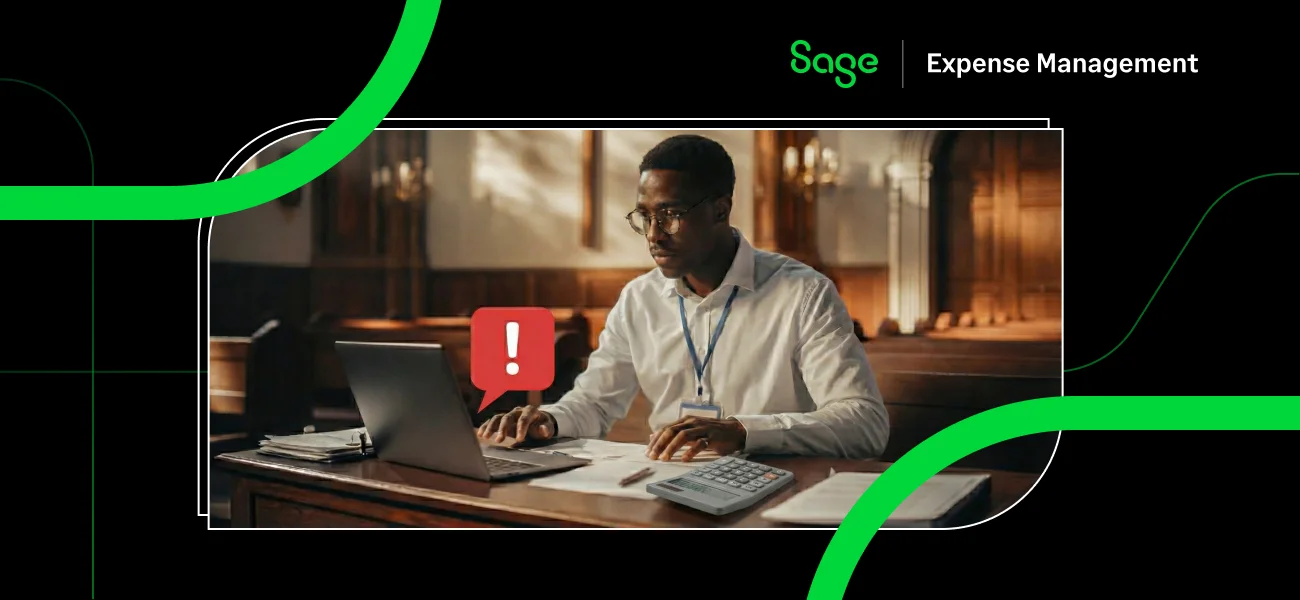“I wish I could spend more time creating invoices.”
There’s a reason nobody says this.
Some of your most common financial tasks already take up too much time and effort. While they’re necessary for the business, the truth is, you can automate these steps without negatively impacting your financial processes.
In fact, you might get more accurate estimating and close books faster with automation. This can ultimately improve your profitability and free you up to focus on bigger initiatives.
This is especially true for remote teams.
Why should remote businesses consider automating financial processes?
One of the most significant benefits of remote work is taking control of your schedule. Automating mundane and repetitive tasks can help fasten this process.
Instead of spending time tracking down past timesheets to get an accurate hours estimate, finance teams can forecast the next quarter or dig into new growth opportunities with an automated software. Teams can also spend more time on strategic thinking and less time filling in lengthy Excel sheets.
With an automation software and a little bit of setup, businesses can streamline the following tasks and save time and money. Let’s take a look.
1. Payroll
Manual payroll management is a complex and time-consuming process. It consists of a series of repetitive tasks that include, but are not limited to:
- Enrolling employees into your company's payroll system
- Calculating paychecks and writing them
- Processing payroll
- Maintaining payroll records
Ensure you also keep in mind the different pay rates for employees, benefits, and tax regulations.
If you run a globally distributed company (such as a remote staffing agency, for instance) with employees spread across the world, the entire process can be even more complicated.
Payroll has traditionally been a cost center for businesses. With the help of automation, you can significantly reduce the cost of managing and processing payroll.
Automation can help you simplify and speed up your payroll processes. You can use automation to:
- Track clock ins for hourly and salaried employees and automatically generate timesheets
- Generate amounts based on set pay rates and the hours worked
- Manage overtime, double-time, commissions, and bonuses
- Manage tax deductions and make sure you comply with federal and state regulations
- Generate reports quickly
- Generate a check stub template
An automated payroll software eliminates the need for manual data collection. It also saves your HR and finance teams time and effort by automating the entire payroll process. Lastly, it helps minimize errors, reduce delays, and protects your business from penalties and fines.
In general, the larger your company is, the greater the benefit you'll experience from payroll automation.
When choosing a payroll solution, look for features such as:
- Automatic payroll processing – Includes calculating employees' gross pay automatically while taking into account deductions for insurance, retirement contributions, and taxes.
- Flexible pay support – A good payroll automation solution allows you to meet your employees' diverse needs. As such, it should support multiple payment options and integrations.
- Time tracking – Being able to track employee hours and generate and approve timesheets is crucial for paying employees correctly.
- Tax management – Your payroll solution should calculate federal, state, and local tax automatically. It must also prepare tax forms that you can print or submit electronically.
- Reporting – Another crucial feature is generating a variety of customizable reports, including tax reports and deduction analysis reports.

2. Invoicing
Traditional invoicing is a bloated, inefficient, and time-consuming process. It’s also prone to errors. It does not matter if your company gets clients organically on Google, by using automated subscription bots or by cold-calling, things can still get messy quickly when managing invoices for multiple customers with different payment terms and cycles.
You can use automation to populate invoices and process invoice data automatically. Invoice automation solutions also often support recurring invoices and automatic invoice reminders.
Automating your invoicing process ensures that your invoices are accurate. It minimizes missed and late payments. Businesses can also reduce processing time of expenses and ensure employees get paid faster.
Invoicing automation solutions can help reduce fraud and improve security. Using these solutions can also save on labor costs and enable your staff to work on more important tasks.
Here’s how to get started with invoicing automation:
- Choose an invoice automation solution – Look for features such as recurring invoices, payment reminders, multiple currency support, invoice templates, and customizable reports.
- Map out your invoicing workflow – The next step is to map out how and when you invoice customers. Make sure to include information on quote creation, invoice drafting, and payment collection.
- Create invoicing rules – Finally, set up invoicing rules you want your automation solution to follow. When should it issue an invoice? When should reminders be sent? Make sure to create rules for all the different types of customers you serve. Some apps have these reminders built-in.
3. Expense management
43% of companies manage expense reports manually. 46% don’t even track how much it costs them to process expense reports. For a lot of these companies, their biggest expense management pain point is actually employees losing receipts.
Here’s how expense management works at most companies:
- Employees keep receipts and use them to fill out expense reports
- The manager reviews and approves reports
- The finance team reconciles everything and takes care of the employee reimbursements
This is a lengthy and costly process. On average, companies spend $58 to process a single expense report.
19% of those expense reports, however, contain errors. It’s easy to see why — there are a lot of things that can go wrong. For example, employees can lose receipts, or the finance team can make a data entry error when processing the receipts.
It costs businesses an additional $52 to correct an expense report.
As you can see, manual expense management can be very expensive. But by using an expense management software, you can reduce errors and lower the average cost of processing an expense report.
- An automated expense reporting software provides businesses with visibility into company spending. It also completely eliminates manual data entry. This, in turn, helps reduce the time employees spend on creating and approving expense reports.
- Businesses can use automation solutions to generate detailed and accurate expense reports quickly. This creates a paperless expense reporting process, which speeds up reimbursement cycles.
- Employees can simply snap photos of receipts, and the expense software will sort expenses automatically. You can also set up some solutions to approve and reimburse certain types of expenses automatically.
Automating expense management can ensure employees adhere to your expense policy and business rules. It can also help you prevent expense fraud.

4. Estimating hours and budgets
Your project estimates need to be as accurate as possible if you want your business to stay profitable. If you’re not careful, you can overspend on a project and completely blow your profit margin.
While you can rely on your experience to make project estimates, automation solutions are usually far more accurate at estimating project hours and budgets.
Automation can help you reduce your risk exposure by making it easier to align costs and schedules. You can centralize cost and financial data, ensuring full transparency for all stakeholders.
Cost management and time tracking software can also help you take advantage of past project data and history to make more accurate estimates. This allows you to allocate the right amount of resources to each project.
You can use a time tracking software to:
- Understand how much time it takes to complete tasks – If you’re not using a time tracking software, you’re probably guessing how much time it takes to complete tasks. By using software, you can get accurate data on how much time each specific task takes.
- Identify your most efficient team members – Time tracking data can provide you with insight into which team members are the most efficient at completing certain tasks. You can then use this information to assign time-sensitive tasks to those team members that will complete them the fastest.
- Plan the most effective way to complete projects – With insight into the time taken to complete certain tasks and the names of efficient team members, you can plan the most effective way to complete projects.
5. Tracking budgets and preparing reports
You don’t want to be surprised by how little budget is left. Automation can help with this.
Analyze project budgets in real-time and then use the findings to guide your decision-making process. Most automation solutions can send alerts when a project is at risk of overspending or as you reach different milestones.

The same goes for expense reporting.
Manual reporting is prone to errors. It can also be so time-consuming that it outweighs any insights it provides by the sheer effort it takes to create the report.
An expense software comes with customizable filters to make expense reporting and expense tracking a truly one-click process. It also allows you to save filters and reports according to your specifications. This can save your team a lot of time and enables them to spend more hours on tasks that bring more value to the business.
You’re up
It’s time to take action.
Ready to use automation to save your team’s time and grow your business?
Here’s what you need to do:
- Identify problems you’re looking to address. Are you spending too much time managing payroll? Do you suspect you’re dealing with expense fraud? Maybe your projects often go over budget? Identify problems you’re looking to address and write those down. Use this list when reviewing automation solutions.
- Get employee buy-in. Before going any further, make sure you get employees on board with implementing an automation solution. Explain all the benefits that such a solution can bring to both employees and the company.
- Review solutions. Look into different automation solutions. Focus on those that are easy to set up and use, scalable, customizable, and integrate with other solutions you already use.
- Demo and decide on a solution. Once you narrow down a list of potential solutions, demo each one and decide on what best suits your needs.
- Implement. Create a plan for implementing financial automation.. Ensure regular communication between all stakeholders. Make sure everyone’s on the same page when it comes to timelines and responsibilities.
The five financial processes mentioned above are essential to keep your business moving forward. They also involve repetitive manual tasks that can be automated easily. By switching to an automation solution, you can streamline your financial operations, , enhance productivity, get accurate insights, and stay compliant with rules and regulations. So, go ahead, implement these solutions today!



















